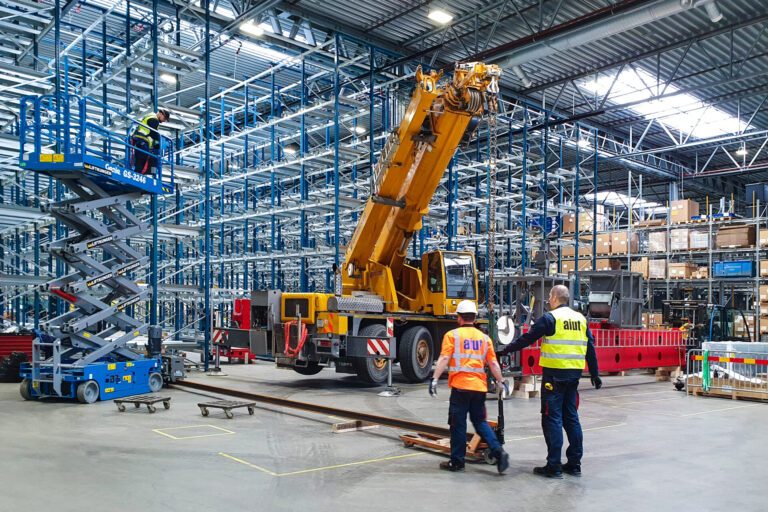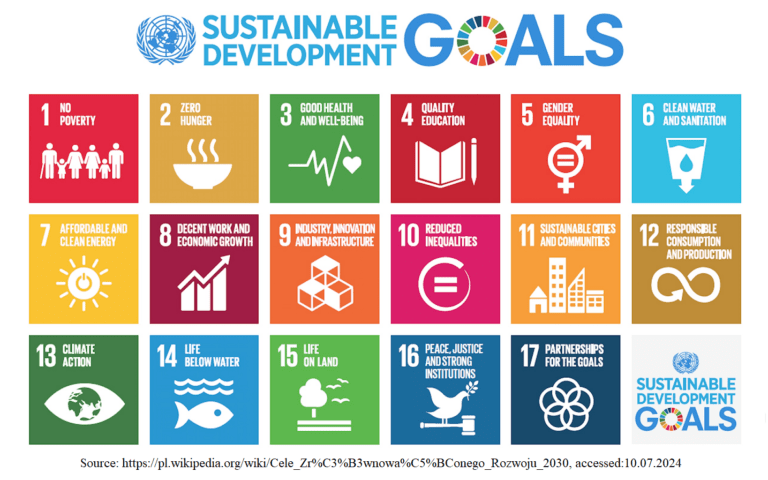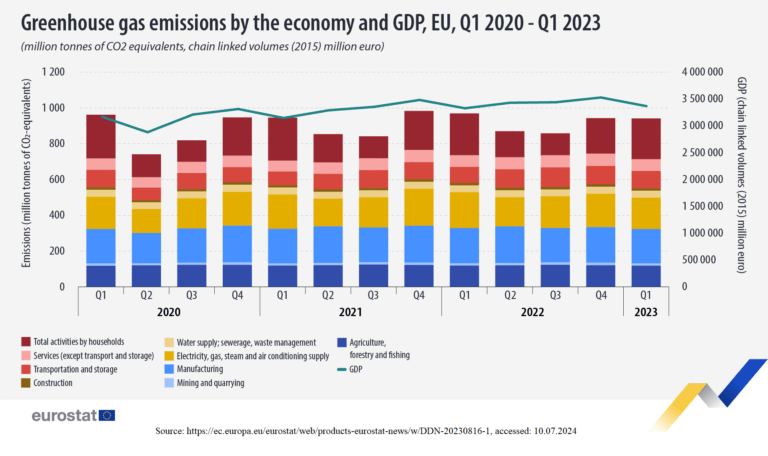
- Sustainable logistics: How technology helps reduce CO2 emissions?
Sustainable logistics: How technology helps reduce CO2 emissions?
From this article, you will learn:
New trends and challenges are significantly changing supply chain management. In an era of growing environmental awareness, consumers still expect quick and efficient delivery, but they also demand companies to be committed to sustainable development, decarbonization, circular economy, and specific actions for climate protection. Logistics companies are seeking ways to reduce CO2 emissions and conduct sustainable practices to meet these expectations and gain a competitive edge. Automation and new technologies play a crucial role in achieving these goals and help companies implement sustainable logistics and corporate social responsibility concepts.
Sustainable development goals and the awareness of entrepreneurs
The concept of sustainable development, introduced by the United Nations in 2015, aimed to motivate companies to take initiatives in designated areas. For example, goal 13 concerns urgent action to combat climate change and its impacts. Although the idea of sustainable development is known to most businesses, it was initially perceived as an unnecessary investment and cost. However, the growing environmental awareness of consumers did not allow ignoring actions for environmental protection. Hence, companies began to focus on ecological issues, reducing their negative impact on the environment while implementing savings through new technologies.
CCF and ESG – what are these indicators?
Sustainability initiatives that measure the environmental impact of companies are emerging. With indicators such as CCF or ESG, we can compare our organization's activities with others and monitor progress in defined areas.
ESG (Environmental, Social, and Governance) is a set of criteria for assessing companies' activities, relating to their impact on the environment, society, and corporate governance. In the environmental area (E), companies are analyzed regarding natural resource management, CO2 emissions, and nature conservation efforts. The social aspect (S) includes issues such as employee rights, gender equality, working conditions, and social engagement. Governance (G) concerns management practices, operational transparency, ethics, and company structure.
CCF, or Corporate Carbon Footprint, describes the amount of greenhouse gas emissions generated directly or indirectly by a company's activities. It helps businesses analyze and identify emission sources and apply precise methods for calculating them.
Greenhouse gas emissions to the Atmosphere – what are we currently facing?
Eurostat report shows the quarterly amounts of greenhouse gases emitted by various economic sectors. Data indicates that in the first quarter of 2023, the largest emissions were from: households (24%), electricity and gas supply (20%), industry (19%), and agriculture (13%), followed by transport and storage (10%). Compared to the first quarter of 2022, emissions decreased in 5 of the 9 economic sectors. The largest decrease was recorded in the 'electricity and gas supply' sector (-12.3%). The main sector where emissions increased was 'transport and storage' (+7.2%). Access to the Eurostat database can be found here.
What is the meaning of Green Logistics?
Sustainable logistics, also known as Green Logistics, integrates practices that minimize the negative environmental impact of logistics activities while maintaining operational efficiency. It includes actions aimed at reducing greenhouse gas emissions, limiting natural resource consumption, minimizing waste from logistics processes, and improving energy efficiency at every stage of the supply chain – from production through warehousing to transporting goods to consumers.
How to reduce CO2 Emissions? — key goals of sustainable logistics and technologies supporting them
Sustainable logistics practices — freight optimization algorithms
One strategy of Green Logistics is optimizing carriers' routes, which positively impacts fuel consumption and CO2 emission reduction. Optimization algorithms can minimize costs and empty runs, as well as analyze routes and courier loads. Digital transformation has enabled the creation of efficient, global platforms that connect commercial senders and shippers and facilitate supply chain management. Using artificial intelligence (AI) and Big Data, truckload capacity can be optimized to avoid empty runs. These technologies also help in demand forecasting and inventory management, reducing product loss, minimizing waste, and improving planning.
Green transport and eco deliveries
In sustainable logistics, the use of eco-friendly vehicles, such as electric, hybrid, and other low-emission modes of transport, plays a crucial role. The EU Council has adopted a regulation tightening CO2 emission limits for heavy vehicles, requiring manufacturers to reduce greenhouse gas emissions from new vehicles by 45% from 2023, 65% from 2035, and 90% from 2040 compared to 2019 levels. This practically means replacing combustion engine vehicles with electric and hydrogen-powered vehicles. Using battery-powered electric drives ensures zero emissions and allows the use of renewable electricity. Some companies are already using e-trucks, which are effective on shorter routes, contributing to emission reduction and promoting eco-friendly transport.

Energy-efficient, green warehouses for sustainable logistics
Energy-efficient, green warehouses represent the future of logistics and goods storage, addressing the growing need for sustainable logistics. They feature advanced technologies that minimize energy consumption and greenhouse gas emissions while increasing operational efficiency. Installed intelligent LED lighting management systems adapt to activity levels, positively impacting the environment. Additionally, process automation within these warehouses, such as packaging, sorting, picking, or internal transport, reduces material and energy losses required for production, leading to lower raw material consumption and, therefore, lower CO2 emissions. Furthermore, thanks to automatic high-bay warehouses, we can better utilize the space by increasing the density of storage per unit area, ensuring continuity of logistics processes and unprecedented operational efficiency. Learn more about high-bay warehouses here.

Green future through waste recycling and reuse
Another important strategy in sustainable logistics is promoting waste recycling and using reusable packaging. As long as possible, existing materials and products should be reused and ultimately recycled. This way, we maximize the product lifecycle.
Sustainable transportation with railway infrastructure
Rail is the most eco-friendly means of transporting goods. According to the EU Council, as stated in Eurologistics magazine, issue 2/2024, it accounts for 1.9% of energy consumption and is responsible for 0.4% of greenhouse gas emissions in the UE. We also learn that transporting a 1000-ton load requires only one train, while road transport would require 35 trucks. This shows the scale that greater use of rail in transportation and logistics can bring for businesses in the future.
Example of sustainable logistics implemented by AIUT
For our client, Media Expert, we designed and implemented advanced lines for transporting products between halls. Our intralogistics system allows for the movement of pallets of various dimensions at a height of 10 meters, with a capacity of over 100 pallets per hour. Each pallet can be loaded with up to 500 kg. The bidirectional functionality of our solution – forward and backward goods flow – increases flexibility and improves our client's warehouse operations efficiency. The automation of transport has brought significant savings and accelerated and streamlined processes, eliminating the need for trucks to transport goods between warehouses for our clients.
See how the implementation of advanced transport lines between halls was carried out for our client, Media Expert.
Summary
Sustainable logistics is a comprehensive approach that requires integrating many strategies and technologies. Investing in automation and advanced technologies is increasingly seen as beneficial and inevitable to survive in the market. Thanks to new technologies, we can implement eco-friendly solutions, sustainable company management, attract customers, generate savings, and improve working conditions while reducing negative environmental impacts.

Would you like to learn more about how we can improve the efficiency of your warehouse and production processes?
We would be happy to discuss projects in the areas of industrial automation and robotics, intralogistics, or automatic remote meter reading systems. We will design and implement innovative solutions that align with the latest trends and requirements and tailor them to the needs of your warehouse or production facility.

